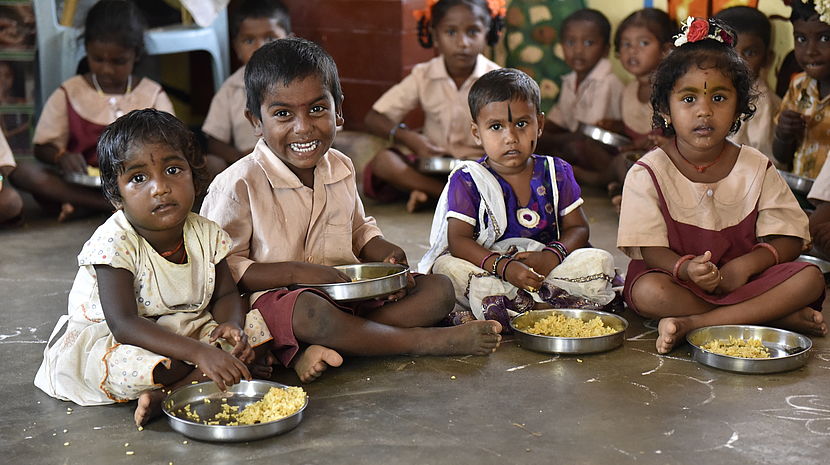Nepal earthquake - six months on

Since the earthquake that hit Nepal on 25 April, CBM, with partner organisations, has reached more than 21,000 people in the worst-hit districts.
We are providing access to medical and psychosocial rehabilitation and support, and working on many levels to ensure that mainstream relief is disability-inclusive. In this process, we are using the knowledge and resources of Nepalese Disabled People's Organisations (DPOs), and working in close cooperation with other humanitarian agencies through the coordination mechanisms set up in the country.
To ensure that the transition into long-term rehabilitation is smooth, that gaps are filled and that the recovery work is in harmony with ongoing development work, more projects are being planned. These are designed not only to create a seamless response, but the overall strategy is looking to the future; CBM and partners will be working to together for months and years to come, to build more inclusive and resilient communities for all.
CBM and partners’ response
Within several hours of the earthquake, the CBM Emergency Response Unit
(ERU) was in regular contact with CBM Country Office in Kathmandu, verifying the safety of staff and their family members. Constant aftershocks meant that people (even those whose homes were not destroyed) slept outside for several days. All CBM staff, their families and CBM partners were made aware of post-earthquake safety precautions.
ERU began planning the response immediately, and on 29th April the CBM Emergency Programme Manager arrived in Nepal to lead a Rapid Needs Assessment (RNA) team with country office and other international partner staff. This select team travelled to partner locations in the worst-affected districts, and, based on unmet needs and partner capacities and experience, planned the first phase intervention.
The RNA team identified suitable partners, and within one week we were working together to conduct medical outreach camps and provide hospital-based treatment and psychosocial support in the worst-affected districts. Again, with our partners, and as one of the founding members of the Age and Disability Task Force (ADTF), we have been working closely in the UN Cluster system since the beginning, promoting inclusive humanitarian response. Similarly, as well as direct project implementation, our partners have been advocating that inclusion is equally reflected at district and community level decision-making, and in the response of all relief organisations. The Ageing and Disability Focal Points (ADFPs) set up and run in three of the worst-affected districts by a DPO exemplify this work, but several other partners are also involved.
By July, a local Emergency Response Team (ERT), was in place in Kathmandu, and is now running the response with constant support from ERU.
In numbers
Medical & psychosocial rehabilitation & support
- 14,808 people have been seen through outreach camps, of whom 3,450 have received rehabilitation services and 878 medical interventions/surgeries have been performed
- 2,780 people have received psychosocial counselling, trauma care and tailored Psychological First Aid (PFA), while 337 people (staff/partners) have received training or refresher training on PFA
Ensuring mainstream relief is disability-inclusive
Influencing the global Nepal response:
- Integral members of the Age and Disability Task Force (ADTF)
- Joint production of key message documents
- Training mainstream agencies to provide disability-inclusive services
Through the Ageing and Disability Focal Points (ADFPs):
- 3,063 persons with disabilities and older people affected by the earthquake have been identified
- 919 referrals have been made to more than 72 organisations ensuring that basic needs (including shelter, health, food, education, livelihood and Water, Sanitation & Hygiene - WASH) are addressed, and specific requirements such as wheelchairs and walking/hearing/visual aids are provided.
Moving forward
The broad objective of the first-phase work has been to ensure that the earthquake-affected population, including persons with disabilities, is supported to recover and is able to contribute to the recovery process. These relief and early recovery initiatives have been continually monitored and, where necessary, revised to take into account changes in the situation. To ensure that the transition into long-term rehabilitation is smooth, that gaps are filled and that the recovery work is supportive of – and in harmony with – ongoing development work, more projects are being developed.
We have undertaken an analysis of accessibility, are implementing research assessing the impact of the earthquake on the most at-risk people, will run projects on health professional training and accessible media, and plan to provide national level training for managers of reconstruction agencies in Nepal on disability inclusive shelters and settlements in close collaboration with the Shelter Cluster led by International Federation of Red Cross (IFRC).
All these projects are designed not only in reference to each other, to create a seamless response, but the overall strategy is looking to the future; CBM and partners will be working to together for months and years to come, to build more inclusive and resilient communities for all.
More reading
CBM working with local partners to ensure that people with disabilities are included at all levels of disaster preparedness and response
Krisha's story
Krisha lost her mother and her sister during the April 25 earthquake and was admitted in a hospital for a month